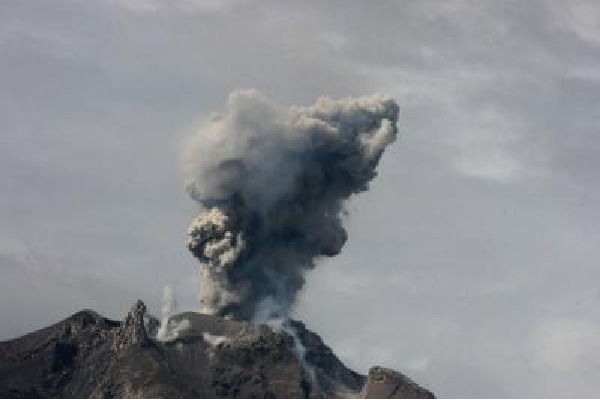Experts: North India’s air is safe, Ethiopian ash impact negligible

New Delhi : A massive ash cloud from the Hayli Gubbi volcanic eruption in northern Ethiopia that drifted across the Arabian Sea and reached India on Monday night is now moving over parts of north India, prompting aviation authorities to issue safety guidelines for airlines. However, it is not expected to impact the air quality as the ash cloud is primarily at mid-levels of the atmosphere, experts said on Tuesday.
The eruption, which occurred on Sunday after the long-dormant volcano suddenly became active, released a thick plume that travelled across the Red Sea toward Yemen and Oman before advancing toward the Indian subcontinent.
By 11 p.m. on Monday, the ash plume had entered Indian airspace and was observed over Delhi, with movement expected towards Punjab and Haryana through the night and well into Tuesday.
The unusual atmospheric event led the Directorate General of Civil Aviation (DGCA) to issue a detailed advisory to airlines, urging them to strictly avoid designated volcanic ash–affected areas and flight levels.
Airlines have been asked to modify flight planning, routing, altitude selection, and fuel calculations in accordance with the latest Volcanic Ash Advisories (VAAs).
The DGCA’s guidance comes amid reports of rerouted and delayed flights as aircraft operators attempt to navigate safely around the affected zones.
Volcanic ash poses a serious risk to aviation, especially jet engines, as ash particles can melt inside engines and cause severe damage.
IndiaMetSky Weather posted an explanation of the phenomenon on X, noting that the plume currently contains sulphur dioxide (SO₂) with low to moderate concentrations of volcanic ash.
In its post, IndiaMetSky Weather wrote: “The Ash plume mostly consists of Sulphur Dioxide with low to moderate concentrations of Volcanic Ash. It’s now stretching from Oman–Arabian Sea region into plains of North & Central India. It will not impact AQI levels but it will impact SO₂ levels at #Hills of #Nepal, #Himalayas and adjoining Terai belt of #UttarPradesh as some of the material will bump into the hills and later move into China.”
“Low chances of Ashfall over plains but some places may see something. NO IMPACT ON AQI LEVEL AT SURFACE LEVEL AT ANY PLACE IS EXPECTED,” the post mentioned.
“Plume will slowly continue to drift over Delhi, Haryana and Rajasthan region. Once again this is at middle levels of the atmosphere so there will not be any impact on the surface apart from some delays & changes in flight routes and some particles might fall to the surface (low chances),” it added.
Meteorologists emphasise that the ash cloud is primarily at mid-levels of the atmosphere, meaning it is unlikely to affect surface air quality for most regions in India. However, hills across Nepal, the Himalayas, and Uttar Pradesh’s Terai belt may see higher sulphur dioxide levels as the plume interacts with mountainous terrain.
The plume is expected to gradually drift westward and weaken, but authorities continue to monitor its movement closely. Passengers have been advised to check with airlines for updated flight schedules as temporary disruptions may continue until the plume disperses





